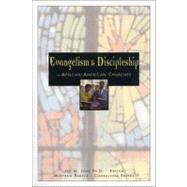
| Contents | |
| Preface by Matthew Parker | |
| Introduction by Lee N. June | |
| PART 1: History of African-American Evangelism | |
| 1. A History of African-American Evangelistic Activity | |
| V. Simpson Turner Sr. | |
| 2. Personal Reflections on Evangelism Among African-Americans | |
| Tom Skinner | |
| PART 2: Taking the Lead in Evangelism and Discipleship | |
| 3. The Church’s Role | |
| Willie Richardson | |
| 4. The Pastor’s Role | |
| Lloyd C. Blue | |
| 5. The Deacons’ Role | |
| Lee N. June | |
| PART 3: Training Laborers for Evangelism and Discipleship | |
| 6. Christian Education: Making the Process Work | |
| Roland G. Hardy Jr. | |
| 7. Youth: Doing It with Music | |
| David Gough | |
| PART 4: Practicing Evangelism and Discipleship at Home and at College | |
| 8. Fatherhood: The Ultimate Head Coaching Job | |
| Michael R. Lyles | |
| 9. Wives and Mothers: Key Players in Evangelism and Discipling | |
| Norvella Carter | |
| 10. Evangelizing and Discipling Youth and College Students | |
| Christopher C. Mathis Jr. | |
| PART 5: Going into the Field | |
| 11. Help Wanted: Missionaries for the Harvest | |
| Joseph C. Jeter Sr. | |
| 12. Evangelizing Professionals: Workers in the Field |
The New copy of this book will include any supplemental materials advertised. Please check the title of the book to determine if it should include any access cards, study guides, lab manuals, CDs, etc.
The Used, Rental and eBook copies of this book are not guaranteed to include any supplemental materials. Typically, only the book itself is included. This is true even if the title states it includes any access cards, study guides, lab manuals, CDs, etc.
Excerpted from Evangelism and Discipleship in African-American Churches
All rights reserved by the original copyright owners. Excerpts are provided for display purposes only and may not be reproduced, reprinted or distributed without the written permission of the publisher.